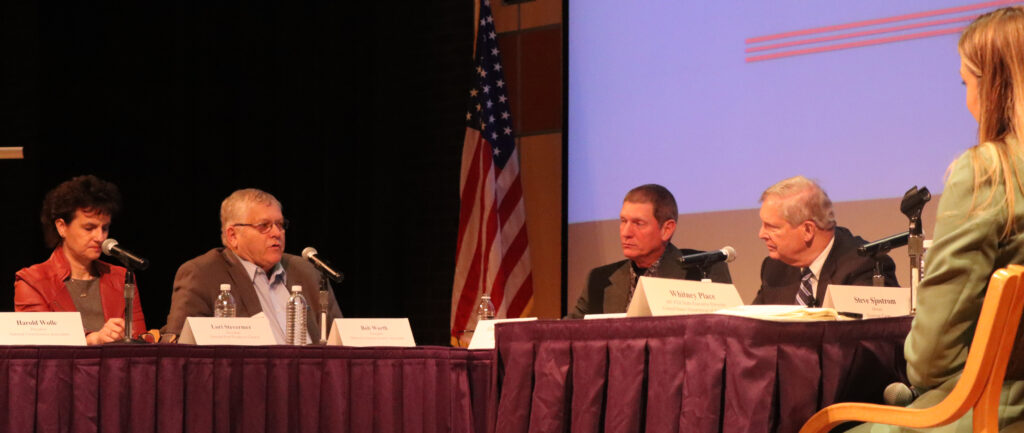The Minnesota Soybean Growers Association is pleased with the Minnesota Department of Agriculture’s (MDA) decision to keep state-specific use restrictions for three dicamba herbicide products the same for the 2023 growing season in Minnesota. The restrictions are aimed at curbing off-site movement of the products. In February, the EPA also announced it would not overrule MDA’s decision, clearing the way for Minnesota farmers to safely use dicamba in 2023.
“Our No. 1 goal was to keep this product for safe use because it does work,” said MSGA President Bob Worth, who also chairs MSGA’s Drift Task Force. “We’re glad the Minnesota Department of Agriculture is working to make that happen.”
The affected dicamba formulations are Engenia by BASF, Tavium by Syngenta and XtendiMax by Bayer. These are the only dicamba products labeled for use on dicamba-tolerant soybeans.
The three products are registered for use in Minnesota in 2023 with the following restrictions:
- DATE CUTOFF: No application shall be made south of Interstate 94 after June 12, 2023. North of Interstate 94, use is prohibited after June 30, 2023.
- TEMPERATURE CUTOFF: No application shall be made if the air temperature of the field at the time of application is over 85 degrees Fahrenheit or if the National Weather Service’s forecasted high temperature for the nearest available location for the day exceeds 85 degrees Fahrenheit.
Users can download these restrictions from the product manufacturer’s website, and they must be in the user’s possession during application.
“These restrictions mirror what we did in 2022 when we saw a major decrease in complaints of off-target movement from the previous year,” MDA Commissioner Thom Petersen said. “These products must be used without impacts on neighboring homes, farms, and gardens. The Minnesota-specific restrictions are based on scientific evidence from our drift investigations and discussions with the University of Minnesota Extension and Minnesota Soybean Growers Drift Task Force.”
During the 2022 growing season, MDA received 25 formal complaints and eight responses to an informal survey, all alleging off-target movement. This was a major decrease from 2021, which saw a total of 304 formal complaints and survey responses.
Other federal requirements for the products that appear on the product labels include:
- Requiring an approved pH-buffering agent, also known as a volatility reducing agent, be tank mixed with dicamba products prior to all applications
- Requiring a downwind buffer of 240 feet and 310 feet in areas where listed endangered species are located
- Additional recordkeeping items
In addition to the cutoff date, Xtendimax and Tavium have crop growth stage cutoffs.
Since dicamba was first registered for use on dicamba-tolerant soybeans in the 2017 growing season, MDA has fielded complaints each year of alleged off-site movement onto neighboring property. The chemical is highly volatile and can damage non-target plant species through spray drift and/or volatilization. Volatility is influenced by several factors including temperature, relative humidity, rate of application, and crop stage. The annual totals of complaints were:
2022: 32 reports
2021: 304
2020: 128
2019: 20
2018: 51
2017: 249
“The restrictions worked perfectly last year,” Worth said. “The people that had any problems, it happened because they went off-label and applied it wrong.”
In Minnesota, Engenia, Tavium and XtendiMax formulations of dicamba are approved for use on dicamba-tolerant soybeans only and are “Restricted Use Pesticides.” The dicamba products are only for retail sale and use by certified applicators.
Pesticide product registrations are renewed on an annual basis in Minnesota.




